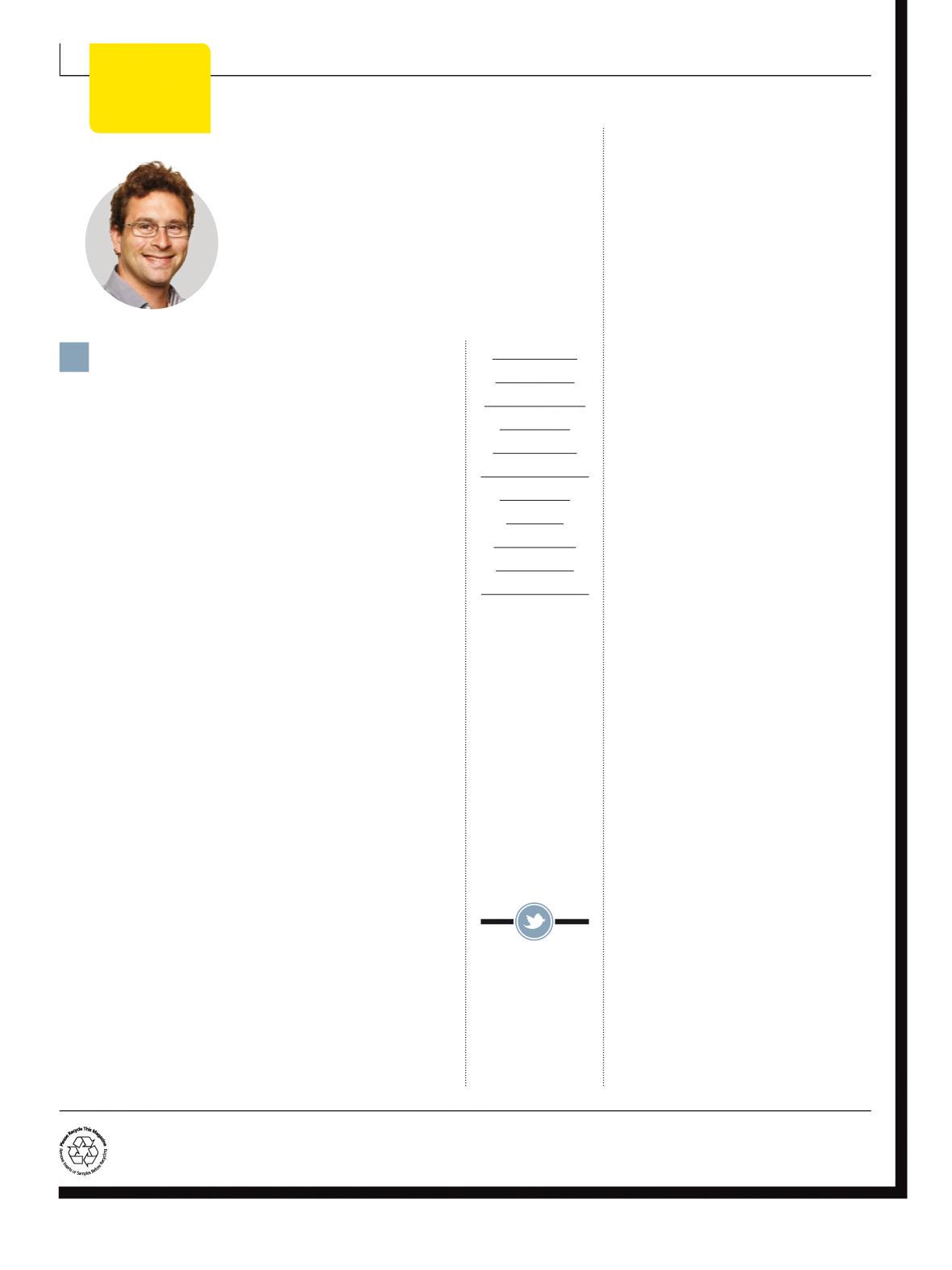
4 minute read
Point After
Uniformly Bounded
BY MICHAEL ROSENBERG
Advertisement
IN HER LAST game before joining the U.S. Women’s National Team this summer, Carli Lloyd scored the game-winning goal . . . for her opponents. And nobody cared. Only 2,376 people were present to see the National Women’s Soccer League’s Boston Breakers win at home that day.
Lloyd went on to become an American sports hero, scoring a hat trick in the Women’s World Cup Final, and now returns to her professional team, which is called the Houston Dash. But you knew that, right? Of course you did.
Why do we marvel at certain athletes on one stage and ignore them on another? The Cup Final drew a 15.2 TV rating, comparable to last season’s college football playoff semifinal games. But I bet you can’t name the 10 teams in the NWSL. (Hint: There are only nine.)
People often say that Americans don’t watch women’s sports. But we do. We watch Lindsey Vonn and Missy Franklin at the Olympics. We will surely watch Serena Williams try to win the calendar-year Grand Slam at the U.S. Open later this summer. And we were thrilled to watch Lloyd the moment she exchanged her Dash kit for the red, white and blue. Why won’t we watch her when she changes back?
Thirty years ago our nation was littered with fat, lazy, cigarette-smoking men who declared, without irony, that women could not be athletes. Two generations of brilliant female athletes have convinced most of America that the opposite is true.
So maybe this isn’t about gender at all. It’s about the marketplace. America has more than 100 major professional sports teams. Whatever we need in this country—nicer politicians, better funding for education, toilet-seat covers that stay on the toilet seat—we don’t need more teams.
If you live in a major metropolitan area and care about sports, you already have favorite teams. New teams need years to capture a city’s heart. Athletes can’t simply walk down Walnut Street in Philadelphia and say, “I work for you.”
Really? Do you make sure my garbage gets picked up? “Oh, no. I play soccer for you.” Uh, thanks for that.
“Now pay me.”
WHAT?
We watch sports if the sport is familiar enough, the
Maybe the lack of an audience for women’s pro soccer isn’t about gender at all.
Maybe it’s about the marketplace.
Can the NWSL catch on?
Join the discussion on Twitter by using
#SIPointAfter
and following
@Rosenberg_Mike
quality of play is high enough and we have some other compelling reason. Professional women’s soccer checks off the first two boxes but not yet the third.
For people who say that the best women are not as athletic as the best men, I say, So what? Last year’s Wisconsin Badgers men’s basketball team was not nearly as talented as the NBA’s Bucks yet drew more fans to its home games. UW sports mean something in that state. You can’t create that feeling with a marketing campaign.
Women can play soccer well enough to hold our attention. That’s not the issue. We just don’t have a compelling reason to watch . . . unless they are playing for our country. Beat Kansas City, and we yawn. We’ve got nothing against Kansas City. It would be a lovely place to visit if they ever replace that toy airport with a real one. But beat the rest of the world, and that gets the blood flowing.
We are a nation of rabid sports fans, but we have quirks. We are ravenous for college football but largely indifferent toward college baseball; our explanation is that we have minor league baseball, but we aren’t particularly passionate about that, either.
We were fascinated by Lance Armstrong’s Tour de France victories but now wouldn’t watch the world’s best cyclists if they raced down our street. Major League Soccer, which is in the middle of its 20th season, needed years to convince us it was worth our time. And in baseball, we have inverted our normal us-against-the-world viewing habits: The World Series matters most, and the World Baseball Classic feels like a marketing gimmick.
The Women’s World Cup was a major event—not just for women’s soccer, but in sports. Women’s professional soccer feels like what it is: a start-up. Someday, a women’s sports start-up will achieve massive success in this country. The employees are certainly ready. ±
SPORTS ILLUSTRATED (ISSN 0038-822X) is published weekly, with an extra issue in February and skipped issues in January, February, April and July, by Time Inc. Principal Office: Time & Life Building, Rockefeller Center, New York, NY 10020-1393. Periodicals postage paid at New York, NY, and additional mailing offices. Canada Post Publications Mail Agreement No. 40110178. Return undeliverable Canada addresses through the UPM process: GST #888381621RT001. U.S. Subscriptions: $65 for one year. SUBSCRIBERS: If the postal service alerts us that your magazine is undeliverable, we have no further obligation unless we receive a corrected address within two years. Your bank may provide updates to the card information we have on file. You may opt out of this service at any time. POSTMASTER: Send all UAA to CFS. See DMM 707.4.12.5. NON-POSTAL and MILITARY FACILITIES: send address corrections to Post Office Box 62121, Tampa, FL 33662-2121. MAILING LIST: We make a portion of our mailing list available to reputable firms. If you would prefer that we not include
your name, please call or write us. ©2015 TIME INC. ALL RIGHTS RESERVED. REPRODUCTION IN WHOLE OR IN PART WITHOUT PERMISSION IS PROHIBITED. SPORTS ILLUSTRATED IS A REGISTERED TRADEMARK OF TIME INC. CUSTOMER SERV ICE AND SUBSCRIPTIONS: For 24/7 service, please use our website: www.SI.com/customerservice You can also call 1-800-528-5000 or write to SI at P.O. Box 62120, Tampa, FL 33662-2120.



